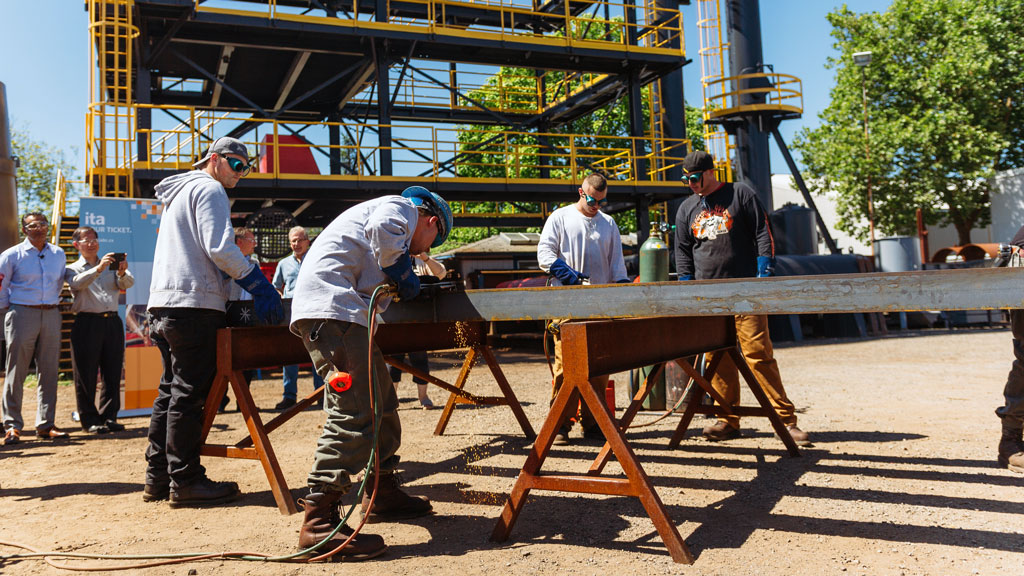A new poll commissioned by the BC Building Trades suggests strong support for restoring compulsory trades in the province.
The poll, conducted this month by ResearchCo., shows 80 per cent of respondents support restoring compulsory trades in B.C.
The Building Trades added in the poll, 90 per cent of respondents believe compulsory trades will make the construction industry safer due to the requirement for training and regulation, and that compulsory trades will contribute to workers being more highly skilled.
Coming soon
With the NDP in power, compulsory trades appear to be on the horizon. The party’s platform has promised to “restore the compulsory trades system to improve safety and give more workers access to apprenticeships that develop their skills for the work ahead.”
Brynn Bourke, interim executive director of the BC Building Trades, said the province has been consulting on compulsory trades implementation since 2017.
“What we see now is that they are re-regulating the labour market,” said Bourke. “This will help build capacity and draw more people into the apprenticeship system. It will help us build a local, highly-skilled workforce that will help us recover from COVID.”
However, Chris Gardner, president of the Independent Contractors and Businesses Association (ICBA), said he and many other prominent construction groups in the B.C. industry have not been part of these consultations and fears that dramatic changes could be a mistake.
“This is a sweeping change and would have significant implications for the construction sector,” said Gardner. “Sweeping changes of any kind have to be thought through carefully. No matter how lofty one’s intentions, there can be unintended consequences.”
Labour legacy
Before changes in 2002, B.C. had 12 compulsory trades, nine in construction and three in automotive. These included plumbers, electricians and automotive service technicians.
Bourke said in addition to doing away with compulsory trades, the province gutted funding for apprenticeship training.
“Completion rates collapsed,” said Bourke. “I had friends doing electrician apprenticeships in 2002 and it took them eight years to get through the system. The impacts of this are still rippling out today. There is a legacy – a generation of lost apprentices.”
Bourke said in addition to improving safety, quality and completion rates, she believes there is a strong people-centred case and business case for compulsory trades.
“We want to take this opportunity to actually level up our workforce and leave these workers much better off,” said Bourke. “We want them to be more mobile and able to have a continuing successful career in the trades with a full scope of the craft to work in the industry and thrive.”
She added investors want to know that skilled tradespeople exist to do quality work and compulsory trades could make the province more attractive.
“If we want to grow LNG investment and want projects to proceed we need high quality labour,” said Bourke. “We need to bring B.C. back into alignment with the expectations of every other province in Canada.”
Addressing the Issues
Gardner explained it is important to take a step back and identify what the government wants and if the proposed changes will actually do it.
He said the industry is facing a significant shortage of skilled workers. It not only needs to attract people to the sector, but also have them complete their training.
He cited drywall, glazing, reinforcing steel work and commercial painting as trades that have only one training location in the entire province, creating long waitlists.
He believes increasing training spaces, refreshing course curriculum to be more relevant and utilizing creative forms of training delivery could all improve the situation.
“If the government goes and does sweeping changes on compulsory trades without investing in more spaces, updating curriculum or making training options more flexible, that will create some challenges and won’t really address the problem,” said Gardner.
He also noted that the private sector has had success with the issue, like LMS Reinforcing Steel. The company developed its own program to train workers so they can challenge exams.
“The private sector has responded and decided it is easier for them to train workers,” said Gardner. “The private sector can fill gaps and do it more efficiently and with innovation.”
Follow the author on Twitter @RussellReports.











This article would have more impact if you explained what exactly you mean by “compulsory trades.” The reader is left to glean this important term on their own.
Compulsory trades means, a tradesperson must be Red Seal Certified. Having served an apprenticeship or spent enough time in the trade and passed the Government exam proving they are competent. Right now, anyone can call themselves an electrician for example, even if they know nothing about the trade.
What in finding is there are a lot of first and second year apps who can’t find work because employers only want 3 and 4th they don’t want the added expense of training first and second.i was lucky I started and finished my app at same company and retired from the same company that’s not happening much anymore